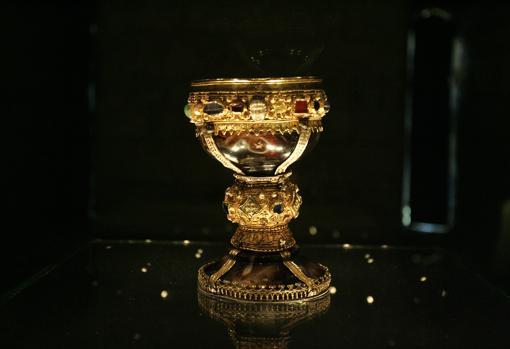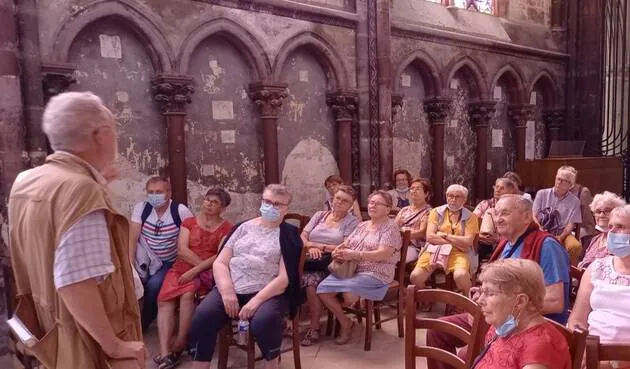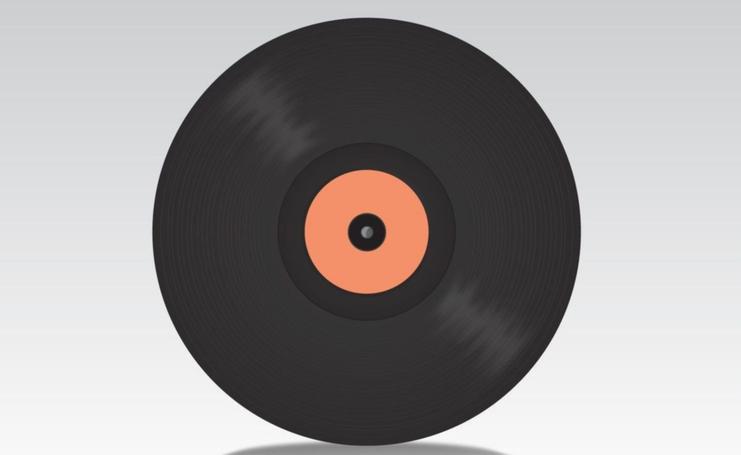The Holy Grail of León, at your fingertips
For centuries, archaeologists (Indiana Jones included) have been trying to find the Holy Grail, the chalice with which Jesus Christ celebrated the first Eucharist. Three years ago, two historians claimed to have found it in the collegiate church of San Isidoro, in León. It is the so-called chalice of Doña Urraca, the daughter of King Fernando I. Since then, this jewel has been locked in an armored display case to protect it from the excessive curiosity or devotion of the more than 100,000 visitors that the Leonese museum receives each year. Starting this week, the alleged Cup of Jesus will be within the reach of the pious tourists who, thanks to technology and virtual reality, will be able to manipulate and even almost touch the most sacred of relics.
The Museum of León opens this Tuesday, the 21st, a new service carried out by the company HP that allows not only to contemplate this magical piece up close and in great detail, but also to manipulate it at will, thanks to an immersive reality project called ZVR, developed by the multinational printers.
With the permission of the Cabildo, this summer HP took out an exact virtual mold of this simple first-century onyx cup, which Doña Urraca surrounded with all her jewels, to prevent any human lips from erasing the sacred imprint of the mouth of Jesus A majestic goldwork made up of gold filigree, gilded silver and all kinds of precious stones to cover the upper stone bowl.
For three months, engineers from the technology firm developed the necessary software to build a 3D clone of the chalice. It is enough for the visitor to put on special glasses for this treasure of medieval goldsmithing to appear before his eyes for some, and the authentic Holy Grail for others. Among the latter, the medieval history teacher, Margarita Torres, and the art teacher, José Miguel Ortega, who in his book The Kings of the Holy Grail proclaimed the authenticity of the relic, sparking controversy among other historians who deny that it is the authentic cup of the Last Supper.
“History has to go hand in hand with new technologies, because science allows us to go further than a chronicle or a scroll says,” says Margarita Torres, about the technological project. This medieval historian defends the "scientific" authenticity of Doña Urraca's chalice, regardless of beliefs.
He knows in depth all the sides of the coin.SubscribeA cup from the 1st century
“We can affirm that the chalice of Doña Urraca is a cup from the 1st century, between the years 30 and 70 , which was found in Palestine. Therefore, we can speak of a cup of the times in which Christ lived and the area where he lived. Did Christ use it? We will never know that, but it was venerated as the Holy Grail since the 4th century. In between there is a gap of four hundred years about which we know nothing ”, certifies the historian and current councilor for Culture of the León City Council.

To scan the object, a technology called photopulsed light or structured white light scanner has been used, which emits a pattern of light (usually parallel lines) on the object. Two 4K cameras analyze the deformation of the pattern when hitting the surface, and allow the vision systems to calculate said deformation, and thus be able to obtain the three-dimensional information to form the 3D object. This virtual image that you see when you put on the glasses can be zoomed in, out, flipped or rotated using a stylus. The image is also projected onto two screens for visitors to view.
HP's chief engineer, Miguel Ángel Turrado, says that when the scanner's first beam of light was shone onto the onyx's surface, it produced an “almost unearthly” orange glow that stunned us all, including the abbot himself. ”.
Alejandro Viloria, R&D engineer at HP and technical manager of the project, corroborates that technically they have encountered three difficulties: the mirror effect that gold produces when light generates an undesirable shine; the spoon effect that reflects the upper bowl of the chalice creating a double holography and, above all, the light that filters into the precious stones and makes them semi-transparent, which does not allow scanning by this system. So, with the help of photographs and jewelry studies, the amethysts, emeralds, seed pearls, pearls, and sapphires that surround the simple Roman bowl made of agate have been virtually introduced.
The fame of the Holy Grail of León has not only transcended the walls of the beautiful Romanesque collegiate church of San Isidoro, but also borders. Since the study by the two historians was published, visits have grown by 30%, especially those from the United States and Great Britain, according to the director of the Museum, Raquel Jaén. "And we trust that the film about the chalice, which will be released next year, will attract more visitors," says the head of the museum about Onyx, the kings of the Grail, the film that recreates the investigation with actors Jim Caviezel and María de Medeiros as protagonists.
The abbot of the collegiate church, Francisco Rodríguez, after trying the glasses and seeing the virtual chalice in front of his eyes, stated: “The best advertisement for something is to have a positive experience. And this technology makes it easier for many people to get to know an admirable object, not to see it as something static in a showcase. And I am sure that this project will contribute to spreading the chalice thanks to word of mouth”.
Is it really the chalice of the Last Supper?
The Valencian competition
Since the study The Kings of the Grail was published, its authors Margarita Torres and José Miguel Ortega, have risen to prominence, rare ground for a medievalist historian. But they have also had to face a torrent of criticism from their colleagues who have accused them of being lax, if not directly fueling a fraud.
“There are always people looking for leadership. All this was born from a wonderful investigation that began in 2010 and was not even aimed at looking for the chalice of Christ at all, but we were studying Muslim objects that were in the Museum of León, many of which came from Egypt ”, assures Margarita Torres.
The historian emphasizes that no one can deny after her work that indeed the original chalice that was in Jerusalem was sent to Egypt, then to Denia, and finally to León, where Doña Urraca, the king's daughter, dressed it with her jewels Fernando I, to protect it. And so it has remained for ten centuries, hidden among many other jewels on a normal shelf in the collegiate church without almost anyone noticing it until now.
In effect, the work of the two historians defends that the chalice that was once kept in the Church of the Holy Sepulcher in Jerusalem first traveled to Egypt and then, in the mid-12th century, the Fatimid Caliph sent it to the Emir of the Denia taifa as a thank you gift. Egypt was suffering from a serious famine and the then caliph, Al-Mustansir, asked the taifas for help. Only Denia responded by chartering a ship with food. The emir, in return, asked that they send him the Christian relic, to give it to the then most powerful ruler of the Iberian Peninsula, Fernando I, King of León, father of the Infanta Doña Urraca.
The barbs have also come from the curia itself. In this case, the ecclesiastical authorities of Valencia, who, when Doña Urraca's chalice began to make noise in the media, rushed to proclaim that the true Holy Grail is the one that is venerated in the Cathedral of Valencia. "In the fourteenth century, a king of Aragon and Valencia, such as Jaime II, asked the Sultan of Egypt for the chalice of Christ. If that chalice was really there, he would not have asked for it," Torres says in defense of the relic of the collegiate church. Leonese, famous until now for the frescoes considered as the Sistine Chapel of the Romanesque.
One of the toughest historians from León has been Carlos Ayala, professor of Medieval History at the Autonomous University of Madrid, who did not hesitate to point out that the essay intended to “turn into history what is mere literary tradition , something inconceivable for a professional historian”.
“You can't criticize a book like he did before it came out in print, because then I hadn't read it. And when he read it, he didn't attack the historical bases of our research, but he argued about whether a sentence was better or worse translated. Obviously there may be nuances of translation. But what is the historical framework of the book is sustained as corroborated by authorities linked to the Smithsonian Institution, which is the highest worldwide reference”, defends Torres, who is embarrassed that her work has been received with more understanding abroad than here. .


